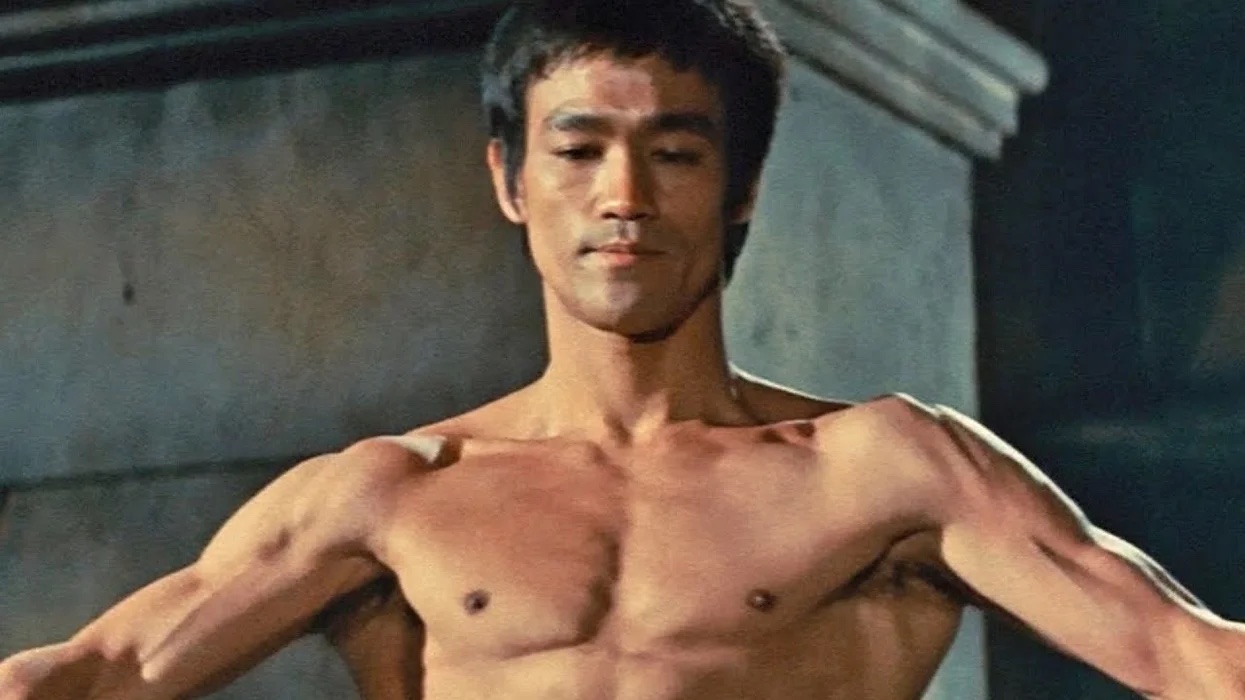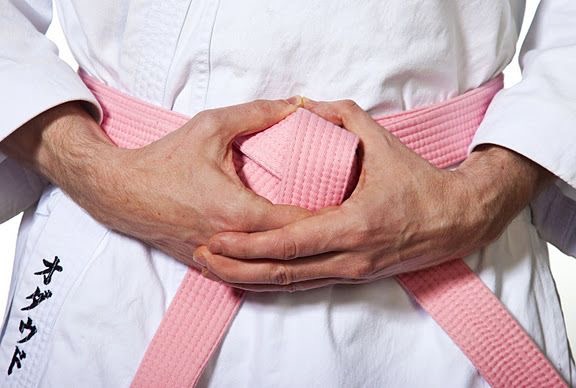A learned man once went to a Zen teacher to inquire about Zen. As the Zen teacher explained, the learned man would frequently interrupt him with remarks like, “Oh, yes, we have that too. …” and so on.
Finally, the Zen teacher stopped talking and began to serve tea to the learned man. He poured the cup full and then kept pouring until the cup overflowed.
“Enough!” the learned man once more interrupted. “No more can go into the cup!”
“Indeed, I see,” answered the Zen teacher. “If you do not first empty the cup, how can you taste my cup of tea?”
I hope my comrades in the martial arts will read the following paragraphs with open-mindedness, leaving all the burdens of preconceived opinions and conclusions behind. This act, by the way, has in itself a liberating power. After all, the usefulness of the cup is in its emptiness.
Make this article relate to yourself because though it is on jeet kune do, it is primarily concerned with the blossoming of a martial artist — not a “Chinese” martial artist or a “Japanese” martial artist. A martial artist is a human being first. Just as nationalities have nothing to do with one’s humanity, so they have nothing to do with martial arts. Leave your protective shell of isolation and relate directly to what is being said. Return to your senses by ceasing all the intervening intellectual mumbo jumbo. Remember that life is a constant process of relating. Remember, too, that I seek neither your approval nor to influence you toward my way of thinking. I will be more than satisfied if, as a result of this article, you begin to investigate everything for yourself and cease to uncritically accept prescribed formulas that dictate “this is this” and “that is that.”
On Choiceless Observation
Suppose several persons who are trained in different styles of combative arts witness an all-out street fight. I am sure we would hear different versions from each of these stylists. Such variations are quite understandable, for one cannot see a fight (or anything else) “as is” as long as he is blinded by his chosen point of view, i.e., style, and he will view the fight through the lens of his particular conditioning. Fighting, as is, is simple and total. It is not limited to your perspective or conditioning as a Chinese martial artist. True observation begins when one sheds set patterns, and true freedom of expression occurs when one is beyond systems.
Before we examine jeet kune do, let’s consider exactly what a “classical” martial art style really is. To begin with, we must recognize the incontrovertible fact that regardless of their many colorful origins (by a wise, mysterious monk, by a special messenger in a dream or in a holy revelation), styles are created by men. A style should never be considered gospel truth, the laws and principles of which can never be violated. Man, the living, creating individual, is always more important than any established style.
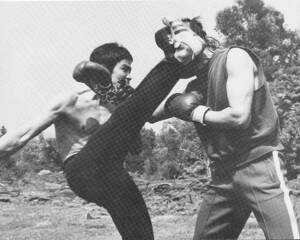 It is conceivable that a long time ago a certain martial artist discovered some partial truth. During his lifetime, the man resisted the temptation to organize this partial truth, although this is a common tendency in a man’s search for security and certainty in life. After his death, his students took “his” hypothesis, “his” postulates and “his” method and turned them into law. Impressive creeds were then invented, solemn reinforcing ceremonies prescribed, rigid philosophy and patterns formulated, and so on, until finally an institution was erected. So what originated as one man’s intuition of some sort of personal fluidity was transformed into solidified, fixed knowledge, complete with organized classified responses presented in a logical order. In so doing, the well-meaning, loyal followers not only made this knowledge a holy shrine but also a tomb in which they buried the founder’s wisdom.
It is conceivable that a long time ago a certain martial artist discovered some partial truth. During his lifetime, the man resisted the temptation to organize this partial truth, although this is a common tendency in a man’s search for security and certainty in life. After his death, his students took “his” hypothesis, “his” postulates and “his” method and turned them into law. Impressive creeds were then invented, solemn reinforcing ceremonies prescribed, rigid philosophy and patterns formulated, and so on, until finally an institution was erected. So what originated as one man’s intuition of some sort of personal fluidity was transformed into solidified, fixed knowledge, complete with organized classified responses presented in a logical order. In so doing, the well-meaning, loyal followers not only made this knowledge a holy shrine but also a tomb in which they buried the founder’s wisdom.
But the distortion did not necessarily end here. In reaction to “the other’s truth,” another martial artist, or possibly a dissatisfied disciple, organized an opposite approach — such as the “soft” style versus the “hard” style, the “internal” school versus the “external” school, and all these separative nonsenses. Soon, this opposite faction also became a large organization, with its own laws and patterns. A rivalry began, with each style claiming to possess the “truth” to the exclusions of all others.
At best, styles are merely parts dissected from a unitary whole. All styles require adjustment, partiality, denials, condemnation and a lot of self-justification. The solutions they purport to provide are the very cause of the problem because they limit and interfere with our natural growth and obstruct the way to genuine understanding. Divisive by nature, styles keep men apart from each other rather than unite them.
Truth Cannot Be Confined
One cannot express himself fully when imprisoned by a confining style. Combat “as is” is total, and it includes all the “is” as well as “is not,” without favorite lines or angles. Lacking boundaries, combat is always fresh, alive and constantly changing. Your particular style, your personal inclinations and your physical makeup are all parts of combat, but they do not constitute the whole of combat. Should your responses become dependent upon any single part, you will react in terms of what “should be” rather than to the reality of the ever-changing “what is.” Remember that while the whole is evidenced in all its parts, an isolated part, efficient or not, does not constitute the whole.
Prolonged repetitious drillings will certainly yield mechanical precision, and security of that kind comes from any routine. However, it is exactly this kind of “selective” security or “crutch” that limits or blocks the total growth of a martial artist. In fact, quite a few practitioners develop such a liking for and dependence on their “crutch” that they can no longer walk without it. Thus, any one special technique, however cleverly designed, is actually a hindrance.
Let it be understood once and for all that I have not invented a new style, composite or modification. I have in no way set jeet kune do within a distinct form governed by laws that distinguish it from “this” style or “that” method. On the contrary, I hope to free my comrades from bondage to styles, patterns and doctrines.
What, then, is jeet kune do? I am the first to admit that any attempt to crystallize jeet kune do into a written article is no easy task. Do remember, however, that “jeet kune do” is merely a convenient name. I am not interested with the term itself; I am interested in its effect of liberation when JKD is used as a mirror for self-examination.
Unlike a “classical” martial art, there is no series of rules or classification of technique that constitutes a distinct jeet kune do method of fighting. JKD is not a form of special conditioning with its own rigid philosophy. It looks at combat not from a single angle but from all possible angles. While JKD utilizes all the ways and means to serve its end (after all, efficiency is anything that scores), it is bound by none and is therefore free. In other words, JKD possesses everything but is in itself possessed by nothing.
Therefore, to attempt to define JKD in terms of a distinct style — be it kung fu, karate, street fighting or Bruce Lee’s martial art — is to completely miss its meaning. Its teaching simply cannot be confined within a system. Since JKD is at once “this” and “not this,” it neither opposes nor adheres to any style. To understand this fully, one must transcend from the duality of “for” and “against” into one organic unity that is without distinctions. Understanding of JKD is direct intuition of this unity.
There are no prearranged sets or kata in the teaching of JKD, nor 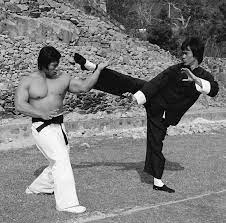 are they necessary. Consider the subtle difference between “having no form” and “have no form.” The first is ignorance, the second is transcendence. Through instinctive body feeling, each of us knows our own most efficient and dynamic manner of achieving effective leverage, balance in motion and economical use of energy. Patterns, techniques or forms touch only the fringe of genuine understanding. The core of understanding lies in the individual mind, and until that is touched, everything is uncertain and superficial. Truth cannot be perceived until we come to fully understand ourselves and our potentials. After all, knowledge in the martial arts ultimately means self-knowledge.
are they necessary. Consider the subtle difference between “having no form” and “have no form.” The first is ignorance, the second is transcendence. Through instinctive body feeling, each of us knows our own most efficient and dynamic manner of achieving effective leverage, balance in motion and economical use of energy. Patterns, techniques or forms touch only the fringe of genuine understanding. The core of understanding lies in the individual mind, and until that is touched, everything is uncertain and superficial. Truth cannot be perceived until we come to fully understand ourselves and our potentials. After all, knowledge in the martial arts ultimately means self-knowledge.
At this point you may ask, “How do I gain this knowledge?” That you will have to find out all by yourself. You must accept the fact that there is no help but self-help. For the same reason I cannot tell you how to “gain” freedom, since freedom exists within you, I cannot tell you how to “gain” self-knowledge. While I can tell you what not to do, I cannot tell you what you should do, since that would be confining you to a particular approach. Formulas can only inhibit freedom; externally dictated prescriptions only squelch creativity and assure mediocrity. Bear in mind that the freedom that accrues from self-knowledge cannot be acquired through strict adherence to a formula. We do not suddenly become free, we simply are free.
Learning is definitely not mere imitation, nor is it the ability to accumulate and regurgitate fixed knowledge. Learning is a constant process of discovery — a process without end. In JKD we begin not by accumulation but by discovering the cause of our ignorance — a discovery that involves a shedding process.
Unfortunately, most students in the martial arts are conformists. Instead of learning to depend on themselves for expression, they blindly follow their instructors, no longer feeling alone, and finding security in mass imitation. The product of this imitation is a dependent mind. Independent inquiry, which is essential to genuine understanding, is sacrificed. Look around the martial arts and witness the assortment of routine performers, trick artists, desensitized robots, glorifiers of the past, and so on — all followers or exponents of organized despair.
How often are we told by different sensei (masters) that the martial arts are life itself? But how many of them truly understand what they are saying? Life is a constant movement — rhythmic as well as random. Life is constant change, not stagnation. Instead of choicelessly flowing with this process of change, many of these “masters,” past and present, have built an illusion of fixed forms, rigidly subscribing to traditional concepts and techniques of the art, solidifying the ever-flowing, dissecting the totality.
The most pitiful sight is to see sincere students earnestly repeating those imitative drills, listening to their own screams and spiritual yells. In most cases, the means these sensei offer their students are so elaborate that the students must give tremendous attention to them, until gradually they lose sight of the end. The students end up performing their methodical routines as a mere conditioned response rather than responding to “what is.” They no longer listen to circumstances; they recite their circumstances. These poor souls have unwittingly become trapped in the miasma of classical martial arts training.
Pointing to the Truth
A teacher, a really good sensei, is never a giver of “truth”; he is a guide, a pioneer to the truth that the student must discover for himself. A good teacher, therefore, studies each student individually and encourages the student to explore himself, both internally and externally, until, ultimately, the student is integrated with his being. A good teacher is a catalyst. Besides possessing a deep understanding, he must 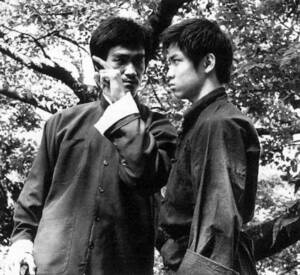 also have a responsive mind with great flexibility and sensitivity.
also have a responsive mind with great flexibility and sensitivity.
There is no standard in total combat, and expression must be free. This liberating truth is a reality only in so far as it is experienced and lived by the individual himself; it is a truth that transcends styles or disciplines. Remember, too, that jeet kune do is merely a term, a label to be used as a boat to get one across; once across, it is to be discarded and not carried on one’s back.
These few paragraphs are, at best, a “finger-pointing to the moon.” Please do not take the finger to be the moon or fix your gaze so intently on the finger as to miss all the beautiful sights of heaven. After all, the usefulness of the finger is in pointing away from itself to the light, which illumines finger and all.
